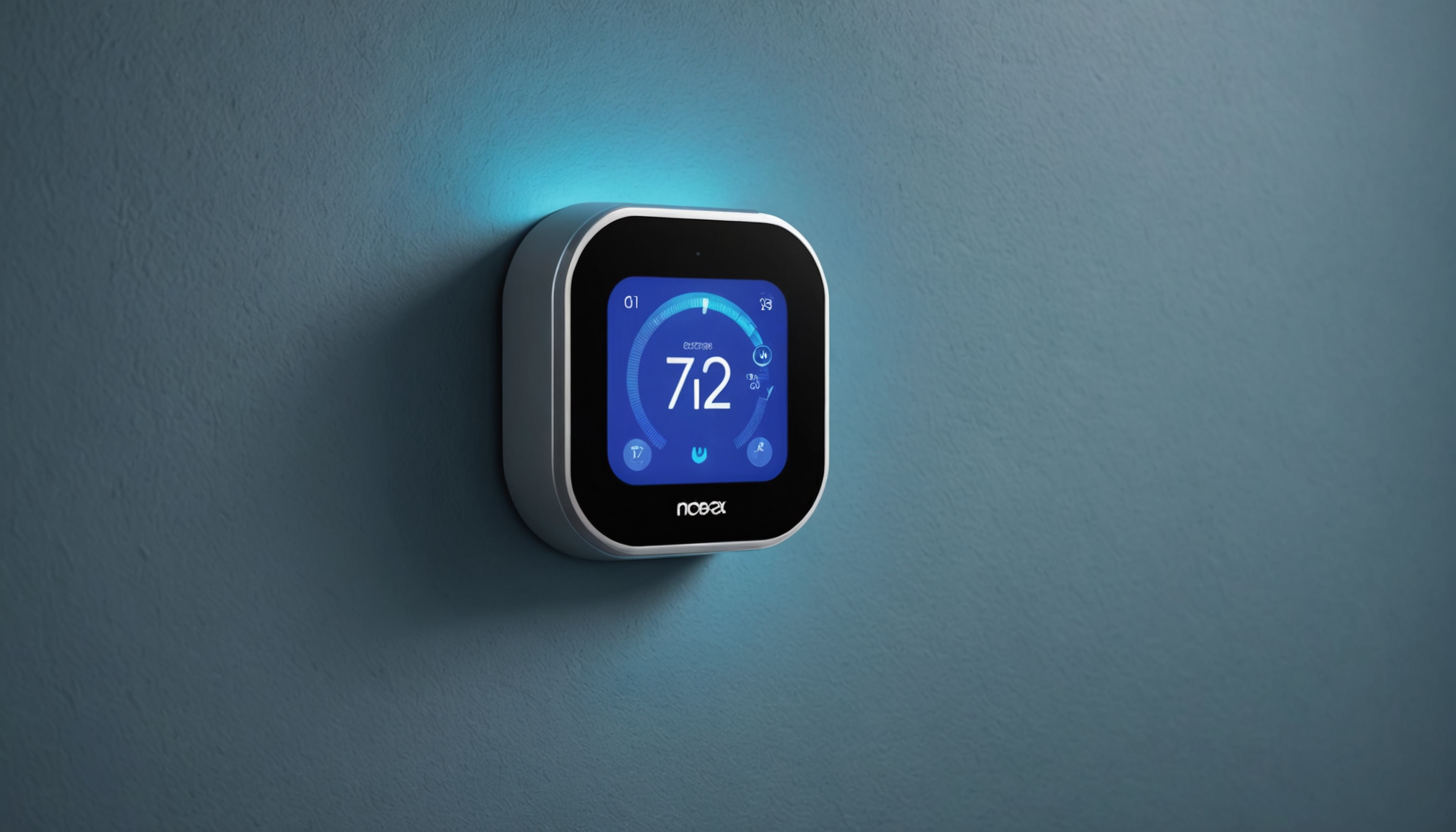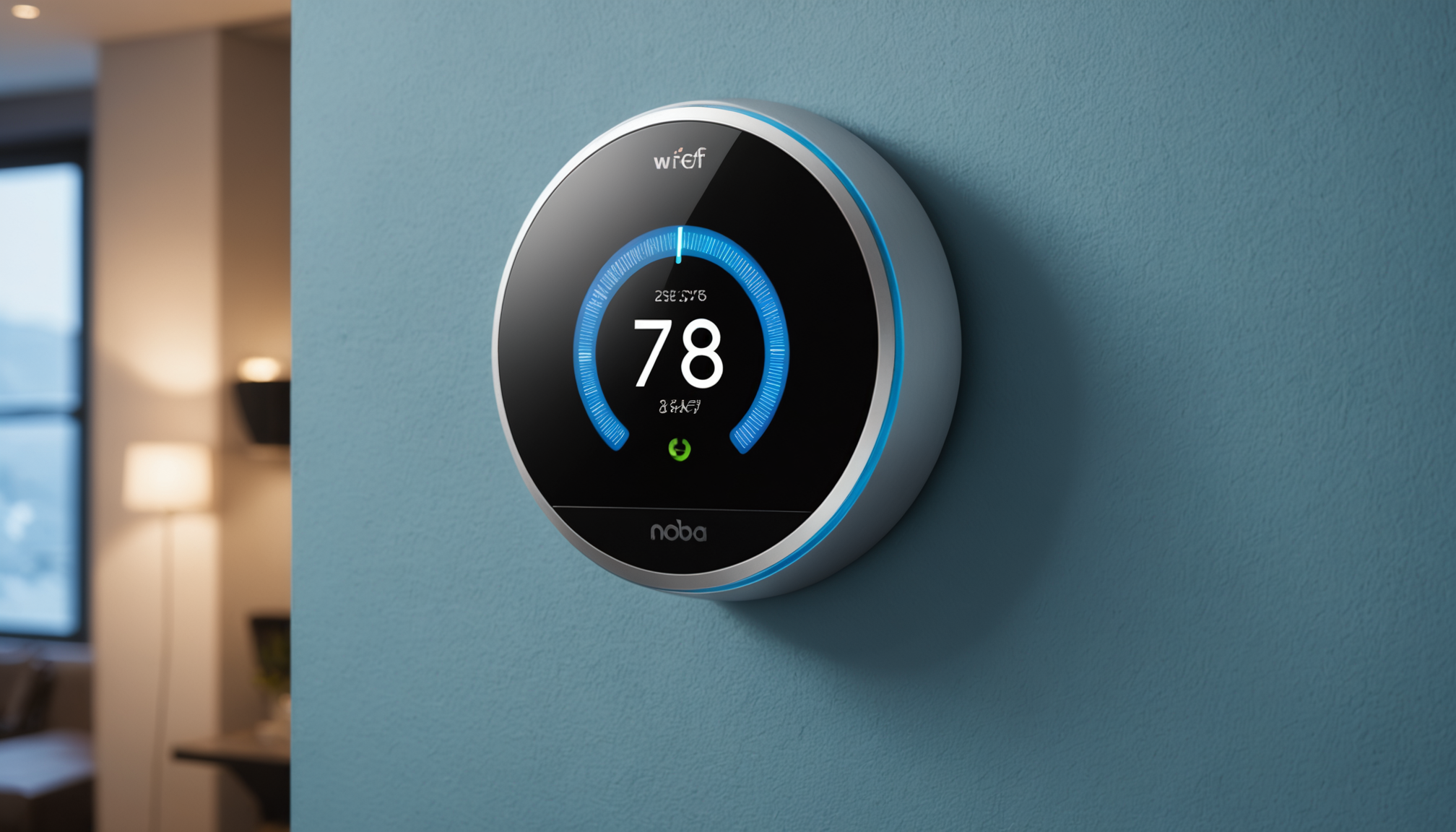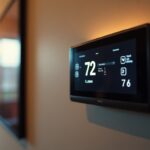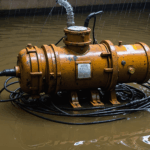To effectively tackle any thermostat-related issues you may encounter, it’s crucial to first understand the basic operation and purpose of this essential device. A thermostat is fundamentally a temperature-sensitive device that works in tandem with your HVAC system to regulate the indoor climate of your home. By maintaining a desired temperature setting, your thermostat ensures comfort and energy efficiency.
Most modern thermostats fall into one of three categories: digital programmable, smart, or manual. Each comes with its own set of functionalities and preferences for users. While digital programmable thermostats offer scheduling options, smart thermostats incorporate Wi-Fi capabilities, allowing for remote control and advanced features. Manual thermostats are often simpler but less flexible compared to their digital counterparts.
When undertaking thermostat troubleshooting, it is vital to grasp how a thermostat communicates with your heating or cooling equipment. Essentially, when the indoor temperature hits the programmed threshold, your thermostat sends a signal to your HVAC system to turn on or off. This simple process becomes more complex when malfunctions occur, which is why understanding the device is your first line of defense against inefficiencies or failures.
Incorrect settings, improper installations, or even external factors like dirt accumulation can all lead to thermostat issues. These problems not only affect comfort levels but can also increase energy bills without you knowing. A thorough understanding of thermostat operation helps in identifying what is normal versus what could signify deeper issues requiring heating fixes or HVAC tips from professionals.
To further delve into the varied types of thermostats and their specific functionalities, refer to the comparison table below, highlighting key differences that might influence your choice or troubleshooting approach:
| Type | Key Features | Best For |
| Manual | Simple operation, cost-effective | Basic, small households |
| Digital Programmable | Set schedules, energy-saving | Families with regular routines |
| Smart | Wi-Fi enabled, remote access, learning capabilities | Tech-savvy users, larger homes |
Understanding your thermostat model and its capabilities can greatly aid in proper maintenance and problem-solving. From navigating thermostat challenges to considering HVAC tips, comprehensive knowledge is the cornerstone to ensuring your home’s comfort and efficiency aren’t compromised.
Common causes of thermostat issues
Thermostat issues can arise from a variety of causes, each with its unique set of symptoms and solutions. Understanding these common causes can streamline your thermostat troubleshooting process and enable you to implement appropriate heating fixes more efficiently.
1. Dead Batteries: One of the simplest yet most overlooked causes of thermostat issues is dead or weak batteries. If your thermostat is powered by batteries, they may need replacing every one to two years, especially if you notice the display fading or unresponsive controls.
2. Incorrect Settings: Setting errors are another prevalent cause. Ensure that your thermostat is set to the correct mode (heating or cooling) and that the set temperature is reasonable. Sometimes, a small oversight such as the fan being set to “on” instead of “auto” can cause the system to run continuously, affecting efficiency.
3. Dirt and Dust Accumulation: Dust buildup can interfere with the proper function of the thermostat’s internal components. Over time, grime can accumulate on the mechanical elements, especially in older, manual models. Periodic cleaning can prevent these problems. Carefully remove any covers and clean with a soft brush or canned air.
4. Wiring Problems: Loose or corroded wiring connections inside the thermostat can lead to intermittent operation or failure to turn on the HVAC system at all. If comfortable and knowledgeable, you can examine the wiring and tighten any loose connections. Otherwise, professional intervention might be necessary to ensure safety and proper function.
5. Placement Issues: The location of your thermostat significantly affects its performance. If it’s placed near a heat source like a window, lamp, or the kitchen, it may give false readings that result in inefficient temperature regulation. Consider relocating it to a more central and neutral location for optimal performance.
6. Software Glitches: For digital and smart thermostats, software glitches can create conflicts or force the thermostat to reset inadvertently. Regularly check for updates from the manufacturer that might resolve such issues. Most smart thermostats will prompt you for updates which can usually be easily installed.
7. HVAC System Malfunctions: Sometimes, the thermostat itself is not the issue. The HVAC system connected to it might be experiencing problems, such as blocked filters or mechanical failures. In such cases, consult HVAC tips or contact a professional to conduct a system check-up.
By familiarizing yourself with these common causes of thermostat issues, you can tackle problems more systematically and efficiently. Whether you’re implementing basic troubleshooting techniques or seeking professional heating fixes, a foundational understanding of these potential pitfalls is essential in maintaining a comfortable and energy-efficient home environment.
Step-by-step guide to resetting
Before you proceed to reset your thermostat, ensure that you’ve consulted the user manual specific to your thermostat model. A basic reset can resolve several issues, allowing it to function optimally. Here’s a straightforward, step-by-step guide to help you:
1. Power Off Your HVAC System: Begin by turning off your HVAC system completely. This is a precautionary measure to prevent any electrical mishaps while working with your thermostat.
2. Remove the Thermostat Faceplate: Gently detach the faceplate of the thermostat. This step is generally required for most models to access the internal reset controls. Be cautious with the faceplate to avoid damaging any delicate components.
3. Locate the Reset Button: Once the faceplate is off, search for a small reset button. If your model does not have a reset button, it might offer a reset option within its menu settings. For smart or digital programmable thermostats, locate the reset commands using the display interface.
4. Perform the Reset: If your thermostat has a reset button, press and hold it for about five seconds or until the display clears or blinks. For models with digital interfaces, navigate through the user menu to find the reset option, and follow the on-screen prompts to perform a system reset.
5. Reattach the Faceplate: Carefully place the thermostat faceplate back into position, ensuring it snaps securely without any loose ends that might interfere with its operation.
6. Power On Your HVAC System: Once you’ve completed the reset, power your HVAC system back on. Allow it a few minutes to restart. For digital and smart thermostats, you may need to re-enter your preferred settings, such as date, time, and temperature programs.
7. Test the Thermostat: After resetting, it’s crucial to check whether the thermostat communicates effectively with your HVAC system. Set it to a desired temperature and observe if the system turns on or off as expected.
These steps are generally effective for resolving minor glitches that occur due to software errors, power interruptions, or incorrect initial settings. Following a methodical approach to thermostat troubleshooting not only aids in restoring functionality but also helps in preempting future disturbances.
Benefits of Resetting Your Thermostat:
– A reset can clear any minor software glitches that could be causing malfunctions.
– It provides a fresh start by erasing conflicting settings or schedules that could be adversely affecting performance.
– A successfully executed reset improves system response and enhances overall energy efficiency.
– Regular resetting as part of your heating fixes can potentially prolong the life of your thermostat by preventing minor issues from escalating.
– Understanding these steps empowers homeowners with practical HVAC tips, ensuring less dependency on professionals for every minor issue.
Remember, if the problem persists despite following these steps, there might be a deeper underlying issue that requires more extensive investigation or professional attention.
How to recalibrate for accuracy
Recalibrating your thermostat is a vital step in ensuring that it reads the temperature accurately and controls the HVAC system effectively. Over time, fluctuations in performance can occur, leading to discrepancies in your home’s heating and cooling efficiency. Whether your thermostat is digital, smart, or manual, recalibration helps maintain the precision needed for optimal operation.
First, you’ll want to verify whether your thermostat indeed needs recalibration. You can do this by cross-referencing with a reliable thermometer placed in the same room. If the readings differ by more than one or two degrees, recalibration may be necessary. This is particularly important if you’ve experienced sudden changes in energy bills or comfort that can’t be explained by other factors.
For most digital and smart thermostats, recalibration may be outlined in the settings or manual. Begin by checking the user guide specific to your model for instructions on accessing calibration settings, which are often hidden within advanced menus. Typically, you’ll find this option within the temperature setting panel. Make slight adjustments as recommended, and ensure to save these changes before exiting the mode.
Manual thermostats often require mechanical adjustments. To recalibrate, remove the cover to expose the inner components, paying special attention to the bimetallic spring or mercury vial, which can become misaligned over time. Identify the calibration screw, usually marked as such, and gently turn it to adjust the temperature reading until it aligns with your reference thermometer. This precise adjustment often demands patience and a delicate touch. Once calibrated, replace the cover and test the system to verify correct operation.
While you can perform these steps independently, it’s crucial to ensure precise adjustments during recalibration, especially when handling sensitive components. Minor misalignments can disrupt the whole heating and cooling cycle, causing inefficiencies. Hence, it’s advisable to periodically double-check the settings against your observations and energy consumption.
If despite recalibration, inaccuracies persist or you encounter difficulties navigating the settings, it might point to a need for professional assistance. Professional technicians can provide an in-depth evaluation, offering HVAC tips that might reveal underlying complications such as malfunctioning sensors or integration issues with your system.
Incorporating periodic recalibration as part of your thermostat troubleshooting regimen not only aids in precision control over your indoor environment but also contributes significantly to energy conservation and cost-efficiency. Plus, it ensures that your heating fixes are not only reactive but also preventative, safeguarding your HVAC system’s longevity. Always stay informed and proactive about these essential aspects to keep your home environment as comfortable and energy-efficient as possible.
When to call a professional
While many thermostat issues can be resolved through basic thermostat troubleshooting or minor heating fixes, there are instances where seeking professional help is crucial. If you’ve tried resetting and recalibrating but continue to face persistent issues, or if the thermostat exhibits erratic behavior that simple HVAC tips and adjustments cannot resolve, it may be time to call in the experts.
One primary indicator that professional intervention is needed is if you experience consistent temperature discrepancies throughout your home that recalibration doesn’t resolve. Such issues might stem from complex underlying problems, such as faulty internal sensors or connections beyond the thermostat itself, potentially embedded within the HVAC system. These problems often require specialized diagnostic tools and expertise that professionals can provide.
Another scenario necessitating professional help arises when wiring issues are suspected. Handling wiring can be risky without proper knowledge, as it involves electrical components that could pose safety hazards or further damage your system if improperly managed. A licensed technician can assess and correct wiring problems safely and efficiently, ensuring that your thermostat and HVAC systems are correctly integrated and functioning.
If software glitches persist despite updates, especially with advanced smart thermostats, a professional evaluation may uncover firmware issues or compatibility problems with your home network or HVAC system. These complications often demand a deeper understanding of both current HVAC technologies and network systems, something an experienced technician is well-versed in.
Finally, if your energy consumption has inexplicably increased, and you suspect the thermostat as the cause, a comprehensive inspection can provide clarity. Professionals can conduct a thorough evaluation, identify any inefficiencies or malfunctions, and suggest targeted solutions that align with your system’s requirements, potentially including recommendations for an upgraded model that better suits your home’s needs.
Ultimately, knowing when to enlist professional assistance is a vital component of effective thermostat troubleshooting. It ensures that deeper issues are addressed promptly, thereby protecting your home comfort and energy efficiency. Keep these considerations in mind, and don’t hesitate to call in professionals when basic interventions don’t suffice, safeguarding your HVAC system’s performance and your peace of mind.
In conclusion, understanding your thermostat’s functions, identifying common issues, and knowing how to reset and recalibrate can go a long way toward maintaining a comfortable and energy-efficient home. Nonetheless, recognizing when professional intervention is necessary ensures that more complex problems are accurately diagnosed and resolved, offering you a dependable and seamless heating and cooling experience. Prioritize proactive maintenance and informed decision-making to keep your home’s climate just right.











